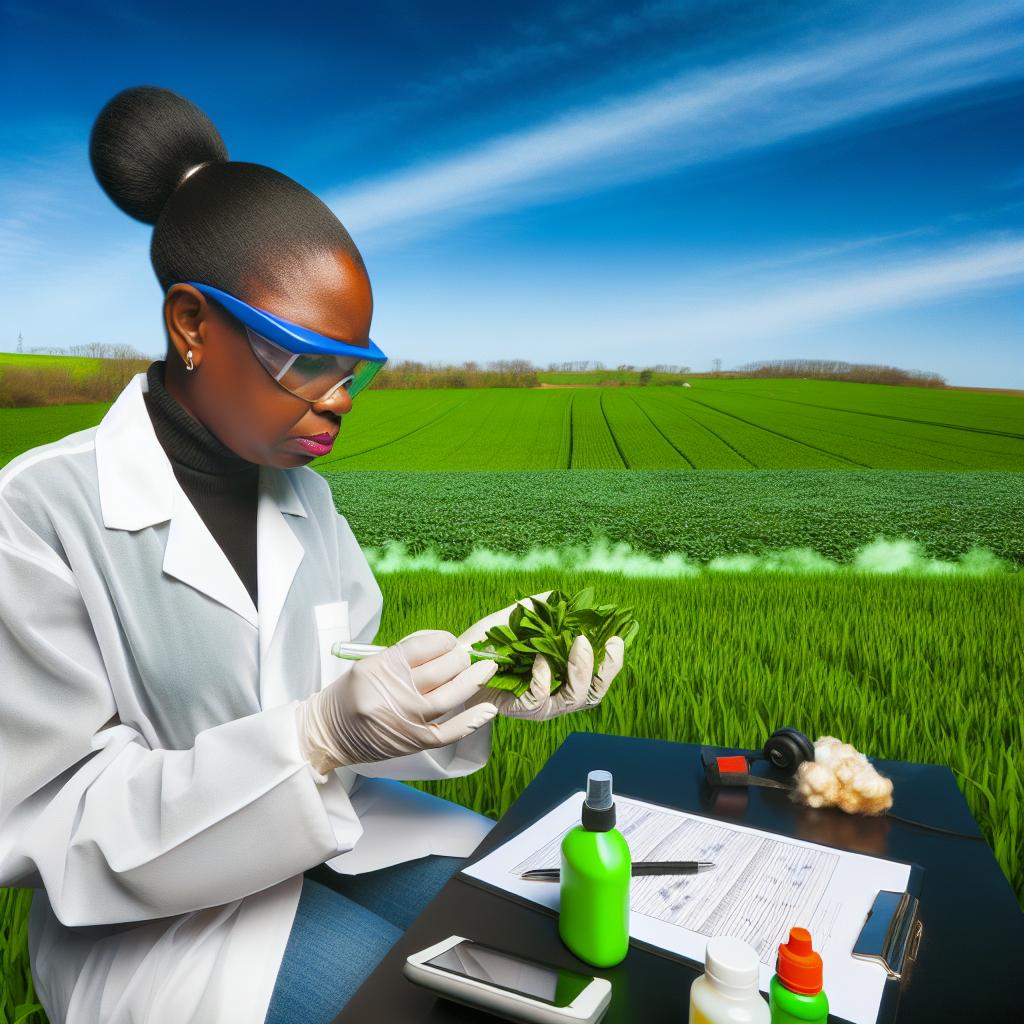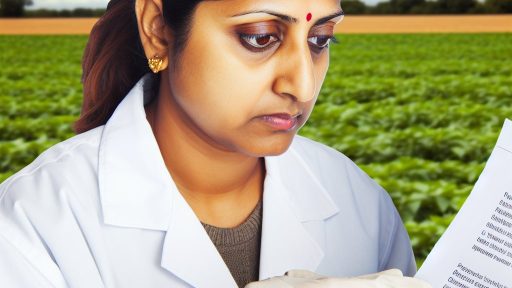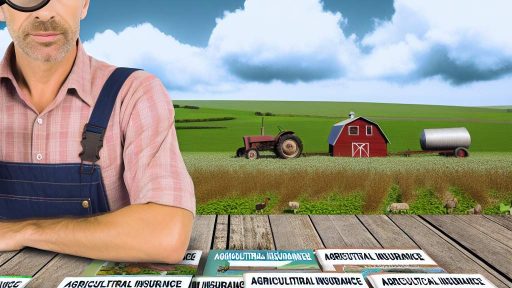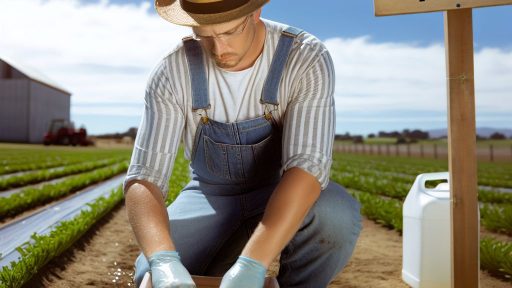Introduction to Pesticide Use in Agriculture
Pesticides play a crucial role in modern agriculture.
Farmers use them to manage pests and diseases that threaten crops.
They help maximize yields and ensure food security.
However, their use entails significant environmental considerations.
Types of Pesticides
Pesticides can be categorized into various types.
- Insecticides target harmful insects.
- Herbicides control unwanted plants, or weeds.
- Fungicides protect crops from fungal diseases.
Each type serves a specific function in agriculture.
Environmental Impact of Pesticides
The use of pesticides can adversely affect the environment.
They may contaminate soil and water resources.
Moreover, they can harm non-target organisms like beneficial insects.
For instance, pollinators such as bees are particularly vulnerable.
Ultimately, this poses a threat to biodiversity.
Regulations and Best Practices
Governments impose regulations to mitigate pesticide risks.
Compliance ensures safe and responsible use.
Farmers can adopt best practices to minimize environmental impact.
- Integrated Pest Management (IPM) combines various control methods.
- Regular monitoring helps in making informed pesticide decisions.
- Using alternative methods, such as biological controls, reduces reliance on chemicals.
These strategies enhance sustainability in agriculture.
Transform Your Agribusiness
Unlock your farm's potential with expert advice tailored to your needs. Get actionable steps that drive real results.
Get StartedOverview of Environmental Impacts of Pesticides
Contamination of Soil and Water
Pesticides often seep into the soil.
This leads to soil contamination and can harm microorganisms.
Moreover, they can leach into groundwater sources.
This contamination poses threats to drinking water supplies.
Additionally, runoff from treated areas can pollute nearby rivers and lakes.
Effects on Non-Target Species
Pesticides can affect various non-target species.
This includes beneficial insects such as bees and butterflies.
Furthermore, they may harm birds and aquatic life.
Such impacts disrupt local ecosystems significantly.
Continued pesticide usage may reduce biodiversity in affected areas.
Development of Resistance
Overreliance on pesticides encourages pest resistance.
This resistance can make pests harder to control over time.
As a response, farmers may resort to using more toxic chemicals.
This practice escalates environmental degradation.
Consequently, the agricultural cycle becomes increasingly unsustainable.
Impact on Human Health
Exposure to pesticides can adversely affect human health.
Research links pesticide exposure to various health issues.
These may include respiratory problems and neurological disorders.
Children are particularly vulnerable to these effects.
Additionally, pesticide residues can remain on food products.
Strategies for Reduction
Farmers can adopt integrated pest management practices.
This approach minimizes pesticide use while controlling pests effectively.
Implementing organic farming methods can also help.
These strategies promote ecological health and sustainability.
Showcase Your Farming Business
Publish your professional farming services profile on our blog for a one-time fee of $200 and reach a dedicated audience of farmers and agribusiness owners.
Publish Your ProfileTherefore, reducing reliance on harmful chemicals is essential.
Chemical Composition and Behavior of Pesticides in the Environment
Chemical Composition of Pesticides
Pesticides contain various chemical compounds designed to target specific pests.
These compounds can be classified into multiple categories, including insecticides, herbicides, and fungicides.
Their chemical structures influence how they interact with ecosystems.
Understanding these compositions helps assess their potential environmental impact.
Behavior of Pesticides in the Environment
Pesticides can undergo several processes after application, affecting their persistence.
Absorption and sorption are vital processes that determine how pesticides interact with soil.
After application, some pesticides may degrade through chemical or biological processes.
This degradation influences how long pesticides remain active in the environment.
Factors Affecting Pesticide Stability
Environmental conditions significantly affect pesticide stability and degradation rates.
Factors such as temperature, moisture, and microbial activity play crucial roles.
For instance, higher temperatures can accelerate degradation processes.
On the other hand, moisture levels influence pesticide solubility and transport.
Pesticide Transport Mechanisms
Pesticides can move through the environment in various ways, affecting their distribution.
Surface runoff can carry pesticides into adjacent water bodies, impacting aquatic ecosystems.
Infiltration into the soil can lead to groundwater contamination over time.
Therefore, understanding transport mechanisms is essential for risk assessment.
Impacts on Non-Target Organisms
Pesticides can adversely affect non-target organisms, including beneficial insects and wildlife.
For instance, insecticides may harm pollinators during their foraging activities.
This impact undermines the ecological balance and biodiversity of ecosystems.
Consequently, appropriate application methods are vital to mitigate risks.
Explore Further: Building Resilient Farms with Supportive Rural Development Policies
Effects of Pesticide Runoff on Water Quality
Introduction to Pesticide Runoff
Pesticide runoff occurs when rain or irrigation washes chemicals off fields.
This runoff can enter local streams, rivers, and lakes.
It poses serious risks to aquatic ecosystems.
Impact on Aquatic Life
Pesticides can be toxic to fish, invertebrates, and amphibians.
Even small amounts can disrupt reproductive systems in aquatic species.
For instance, studies have shown a decline in frog populations exposed to pesticides.
Effects on Drinking Water Quality
Pesticide runoff can contaminate drinking water sources.
This contamination poses health risks to communities relying on groundwater.
Moreover, long-term exposure to pesticide residues is concerning.
Alteration of Ecosystems
The introduction of pesticides can alter local ecosystems.
It can disrupt the food web and harm beneficial insect populations.
For example, pollinators like bees are significantly affected.
Regulatory Measures and Best Practices
Proper regulations are essential to manage pesticide use safely.
Farmers can adopt best management practices to minimize runoff.
These practices include buffer zones and integrated pest management strategies.
Strategies for Reducing Chemical Exposure
Addressing pesticide runoff is vital for protecting water quality.
Communities and ecosystems will benefit from reduced chemical exposure.
Ultimately, enhanced regulations and public awareness can foster healthier environments.
Showcase Your Farming Business
Publish your professional farming services profile on our blog for a one-time fee of $200 and reach a dedicated audience of farmers and agribusiness owners.
Publish Your ProfileYou Might Also Like: Best Practices for Meeting Food Safety Standards in Farming
Impact of Pesticide Use on Soil Health and Biodiversity
Effects on Soil Microorganisms
Pesticides significantly affect soil microorganisms.
These chemicals can reduce microbial diversity and abundance.
In turn, healthy microorganisms contribute to nutrient cycling.
Furthermore, a decline in soil microbiota can hinder plant growth.
Soil Structure and Composition
Pesticide application can negatively impact soil structure.
Compacted soil can lead to decreased water infiltration.
This results in increased runoff and erosion.
Healthy soil structure supports root development and microbial activity.
Biodiversity Loss
Pesticides can lead to significant biodiversity loss in ecosystems.
Non-target organisms, such as beneficial insects, are often affected.
This can disrupt food webs within the ecosystem.
The reduction of pollinators threatens crop production.
Integrated Pest Management Strategies
Adopting integrated pest management (IPM) can mitigate these issues.
IPM promotes the use of biological control methods.
It encourages crop rotation and the use of resistant plant varieties.
As a result, IPM supports sustainable agricultural practices.
Long-term Soil Health
Maintaining long-term soil health is crucial for future agriculture.
Use of organic amendments can enhance soil fertility.
Also, reducing pesticide dependence promotes biodiversity.
Healthy soils yield healthier crops which benefit society.
Learn More: Agricultural Insurance for Livestock Farmers Explained
Risks to Non-target Species and Wildlife from Pesticide Exposure
Understanding Non-target Species
Non-target species refer to organisms not intended to be affected by pesticides.
These can include beneficial insects, birds, and aquatic life.
Consequently, pesticide use can disrupt local ecosystems.
Direct Exposure to Pesticides
Many non-target species come into contact with pesticides during application.
This exposure can occur through spray drift or surface runoff.
Additionally, pesticides can contaminate water sources, affecting aquatic organisms.
Indirect Effects on Ecosystems
Pesticides may also harm non-target species indirectly.
For instance, when insect pests are eliminated, food sources for birds may decrease.
This can lead to reduced bird populations and biodiversity loss.
Bioaccumulation in Food Chains
Pesticides can accumulate in the bodies of organisms over time.
This bioaccumulation poses risks to species higher up the food chain.
Predators may suffer from toxicity due to consuming contaminated prey.
Mitigating Risks through Responsible Use
Farmers and pesticide applicators can reduce risks by following guidelines.
For instance, using integrated pest management strategies benefits ecosystems.
Moreover, employing targeted application methods minimizes non-target exposure.
Regulatory Actions and Public Awareness
Regulatory bodies play a crucial role in managing pesticide use.
Public awareness campaigns educate communities about the risks involved.
Effective communication between stakeholders can lead to safer pesticide practices.
Showcase Your Farming Business
Publish your professional farming services profile on our blog for a one-time fee of $200 and reach a dedicated audience of farmers and agribusiness owners.
Publish Your ProfileLearn More: Rural Development Policies: Empowering Farmers and Communities

Regulatory Frameworks Governing Pesticide Use and Environmental Protection
Importance of Regulatory Frameworks
Regulatory frameworks serve as critical tools for pesticide management.
They protect ecosystems while ensuring responsible pesticide usage.
Moreover, these frameworks promote sustainable agriculture practices.
Key Regulatory Agencies
The Environmental Protection Agency (EPA) plays a pivotal role in the United States.
The EPA evaluates pesticide safety and establishes guidelines for application.
Additionally, the Food and Drug Administration (FDA) oversees pesticide residues on food.
State agricultural departments often enforce local pesticide laws.
Legislation Governing Pesticide Use
The Federal Insecticide, Fungicide, and Rodenticide Act (FIFRA) regulates pesticide distribution.
It mandates that all pesticides be registered and labeled appropriately.
Furthermore, the Endangered Species Act protects species from harmful pesticide impacts.
Environmental Impact Assessments
Environmental Impact Assessments (EIAs) are crucial before pesticide approvals.
They evaluate potential ecological risks associated with pesticide use.
Consequently, these assessments help mitigate adverse effects on wildlife.
Best Practices for Pesticide Application
Adhering to established best practices minimizes environmental risks.
- Use pesticides only as needed, following recommended guidelines.
- Apply pesticides during appropriate weather conditions.
- Implement Integrated Pest Management (IPM) strategies.
Community Involvement and Education
Community education on pesticide regulations enhances awareness.
Active participation in local initiatives promotes safer practices.
Furthermore, outreach programs can help inform farmers and residents.
Future Directions in Pesticide Regulation
Future pesticide regulations may prioritize innovative technologies.
Biopesticides and other natural alternatives could reduce chemical use.
Moreover, ongoing research will likely inform evolving regulatory measures.
Sustainable Alternatives to Chemical Pesticides
Understanding Natural Solutions
Sustainable pest management promotes natural solutions over chemical pesticides.
One effective method is using biological control agents.
For example, ladybugs can help manage aphid populations.
Moreover, beneficial nematodes can combat soil-dwelling pests.
These approaches minimize chemical use and lower environmental impact.
Utilizing Organic Pesticides
Organic pesticides often provide eco-friendly options for farmers.
Neem oil is a popular organic solution derived from the neem tree.
This oil disrupts the life cycle of many insect pests.
Another option is diatomaceous earth, which kills insects on contact.
These organic choices enhance sustainability in agriculture.
Integrated Pest Management
Implementing IPM Strategies
Integrated pest management combines various control techniques for effective results.
Farmers assess pest populations to determine appropriate actions.
This approach integrates cultural, biological, and chemical methods.
For instance, crop rotation reduces pest buildup in the soil.
Furthermore, farmers can use resistant crop varieties to fend off pests.
Monitoring and Evaluation
Critical to IPM is monitoring pest populations regularly.
Farmers can use traps and scouting methods for accurate assessments.
Continuous evaluation helps in adapting practices and ensuring effectiveness.
Moreover, this method reduces the reliance on pesticides over time.
Showcase Your Farming Business
Publish your professional farming services profile on our blog for a one-time fee of $200 and reach a dedicated audience of farmers and agribusiness owners.
Publish Your ProfileAs a result, it fosters healthier ecosystems while maintaining productivity.
Advocacy and Community Initiatives Targeting Responsible Pesticide Use
Understanding Local Needs
Communities benefit from understanding their specific agricultural needs.
Local crops and pests vary widely across regions.
Effective advocacy begins with this foundational knowledge.
Engaging Stakeholders
Engagement with farmers and local businesses fosters trust.
Workshops and meetings provide forums for open dialogue.
Input from diverse stakeholders leads to better strategies.
Promoting Education and Training
Education initiatives raise awareness about responsible pesticide use.
Trainings equip individuals with knowledge about safer alternatives.
Knowledge-sharing platforms can connect experts with farmers.
Implementing Best Practices
Community-led programs can promote integrated pest management.
Using cultural practices reduces dependency on chemical pesticides.
Regular discussions help refine these best practices over time.
Encouraging Sustainable Alternatives
Advocating for organic practices benefits both the environment and health.
Communities can explore biological controls as effective pest solutions.
Sharing success stories inspires others to adopt sustainable methods.
Monitoring and Evaluation
Setting metrics enables communities to track pesticide impacts.
Regular assessments inform adjustments to local practices.
Transparent reporting fosters community accountability.
Building Partnerships
Collaborative efforts with NGOs enhance outreach initiatives.
Partnerships with universities promote research into sustainable practices.
These connections amplify community voices on pesticide issues.
Advancing Policy Change
Grassroots movements can influence local legislation effectively.
Advocacy efforts may align with broader environmental goals.
Communities can mobilize to support policy changes favoring safer practices.
Additional Resources
Conservation Trends in Agriculture Reflect Policy, Technology, and …




